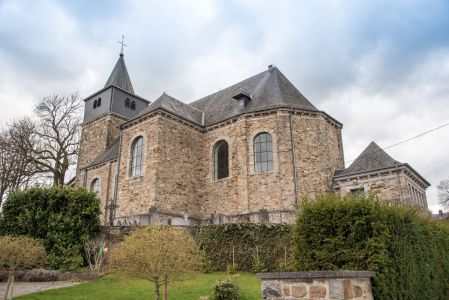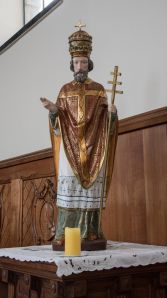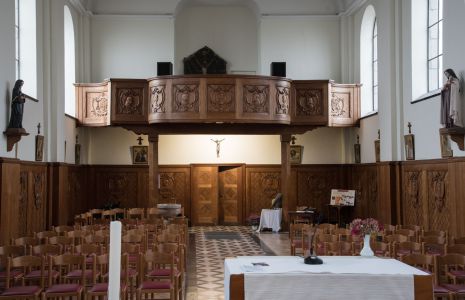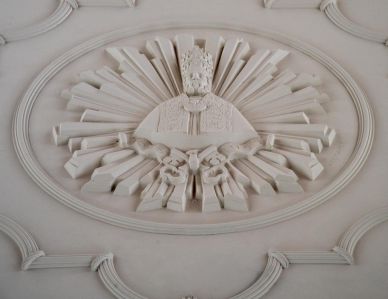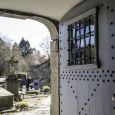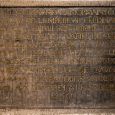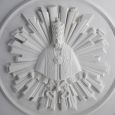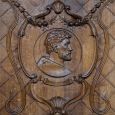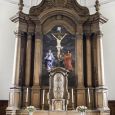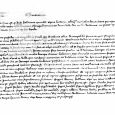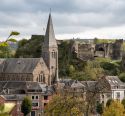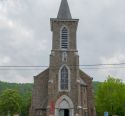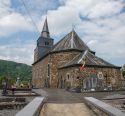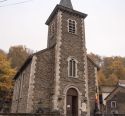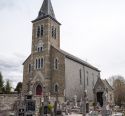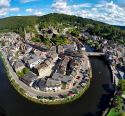Church | 1644 | Romanesque | Catholic Church




Map
Opening hours
01 June - 30 June
Mon -
Tue -
Wed -
Thu -
Fri -
Sat 10.00 - 18.00
Sun 10.00 - 18.00
01 July - 31 August
Mon 10.00 - 18.00
Tue 10.00 - 18.00
Wed 10.00 - 18.00
Thu 10.00 - 18.00
Fri 10.00 - 18.00
Sat 10.00 - 18.00
Sun 10.00 - 18.00
01 September - 16 September
Mon -
Tue -
Wed -
Thu -
Fri -
Sat 10.00 - 18.00
Sun 10.00 - 18.00
Religious offices
Saturday 6.30 pm
Description
The building in the heart of the village, surrounded by a walled in cemetery and by vegetation, has a country charm. When the 1000 year anniversary of the parish was celebrated in 2011, the inside of the building was joyfully repainted. This work met the approval of the faithful and of visitors. Today the building in local stone is as new. This was absolutely necessary after the terrible destruction endured particularly during the battle of the Ardennes in 1944.
According to a 1011 charter a church already existed in Dochamps. A slab embedded in the wall recalls another destruction in 1642, followed by a restauration thanks to the personal skills of the two local brothers Lamornainy. Both were priests and one, William, was the confessor to Emperor Ferdinand II.
Inside,the stucco ceiling was created in 1955 and the carved wood panelling is the work of Victor Demanet. There are also some fine wood statues including one of Christ on the Cross (18th century) and of popular saints like Roch or Anthony (19th century) as well as baptismal fonts (17th century).
KIKIRPA : Photo-library online
Photos
Remarkable elements
Entrance door
This massive gate is probably the original one. It is made of solid oak and has thick square nails. The upper opening is decorated with elegant columns surrounded by thick iron bars. On the upper part of the gate we see "1644" engraved "the year of the restoration of the church. This is one of the rare parts of the church that fought the attacks of the "Battle of the Bulge" in 1944.
Commemorative stone
This black granite stone (1660) pays homage to the two brothers Germé (also called the Armornairi). These are two Jesuits born and raised in the village of Lamormenil. They grew up in this parish. Later they collected the money to rebuild the church after its destruction in 1642. This granite stone is now in the narflex, but it used to be in the middle of the choir. This stone was undoubtedly moved during the reconstruction works on 1 October1660 by Jean-Antoine de Clavier, zealot of the Prince-Bishop of Liège.
Translated with www.DeepL.com/Translator
The ceiling
The old ceiling -in plaster- was completely destroyed in'44. The current ceiling (finished in 1956) is the work of the artist Victor Demanet, renowned stamp cutter and bronze sculpteur. He kept the earlier motifs of the ceiling. This is -as in the past- constructed from five large sculptures representing the 12 apostles, the Blessing Christ, the Virgin Mary and John the Baptist. Under the choir are another five bas-reliefs representing the mystical Lamb of God and the four evangelists.
Panelling and rood screen
They are both made by the artist Victor Demanet, just like the ceiling. They are made of pure oak and come from the workshop of the abbey of Maredsous. The rood screen consists of nine medallions representing saints, each of whom - from afar or from close by - is linked by music. The latter, like the coats of arms of Pope Pius 12 and Bishop Bishop Charue. The panelling is made up of 32 medallions of both female and male saints. St. Victor from the right side of the transept and St. Jeanne from the right side of the choir (i.e. the only médaillon signed in 1956) are the portraits of the artist and his wife Jeanne Morue.
The main altar
The old main altar dates from the beginning of the 18th century and was destroyed in 1944. The present one is said to come from the St Martin's Church of Forrières. It dates from 1701 and is built in a similar style to the original. Like the other and lateral altars it was bought by the municipality in 1962 at a public sale.
However, this main altar does not come from Forrières because it was purchased for the destruction of the Saint Gholien Church of Liège which did a municipal clean-up.
The painting of the main altar: "Calvary with Mary Magdalene" (17th-18th centuries) has just been restored.
The charter of Balderic II
The Charter of Balderic II was written under his rule when he was Prince-Bishop of Liège (1008-1018). It gives to the Congregation the Cross of Liège and the church of Dochamps to his heirs for the upkeep of his brothers and monks. This made the church of Dochamps very strongly connected to this congregation (both as a blood relative and as a trend lifter) and this until the end of the 18th century (so for almost 800 years). It should be noted that this is the oldest note of the village.
Events at
Saints-Pierre-et-Paul
Nearby
Circuit
Nothing too beautiful for a church
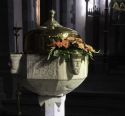
"From bell tower to bell tower in the heart of the Ardennes (car route 1) - Most of the religious art objects were donated by grateful parishioners. The craftsmen and artists they have called upon over the centuries have not counted their hours for these testimonies of faith. So many admirable and moving works!
Of shale and sandstone
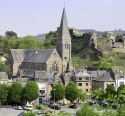
From bell tower to bell tower in the heart of the Ardennes (cycle route 1) - How lucky we are to have so many "building stones" in our basement. In this part of the Ardennes, it is mainly schist and sandstone that we find, or even a mixture of the two. The churches built in these rocks draw a very particular strength of character from them... A route for lovers of climbing.



